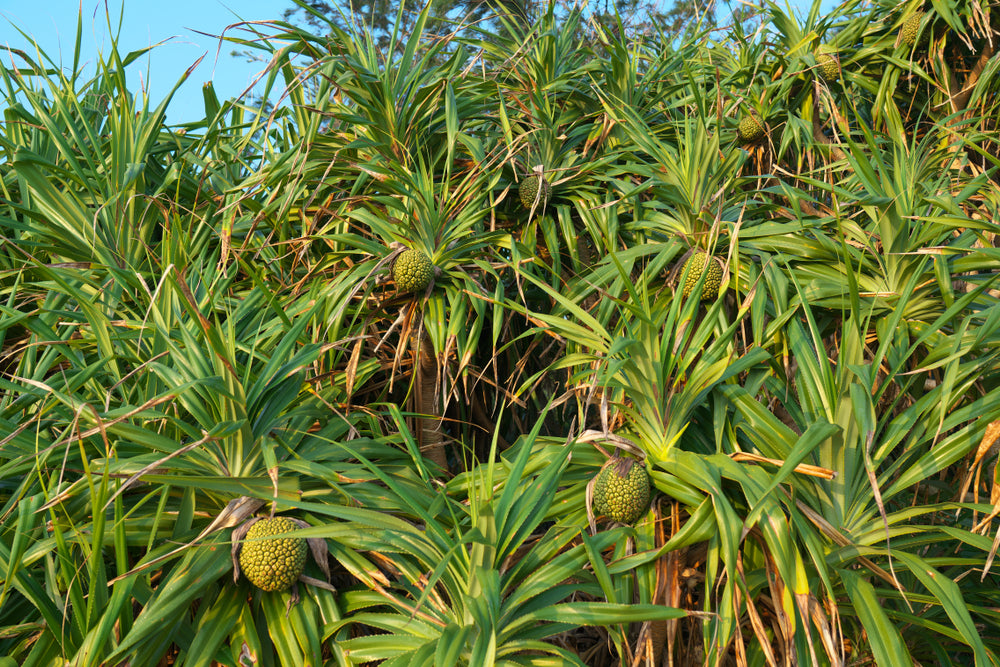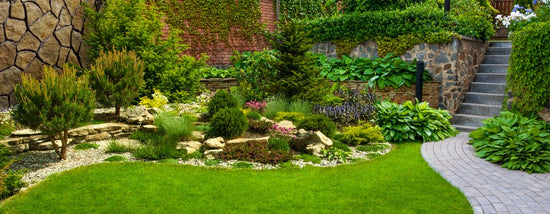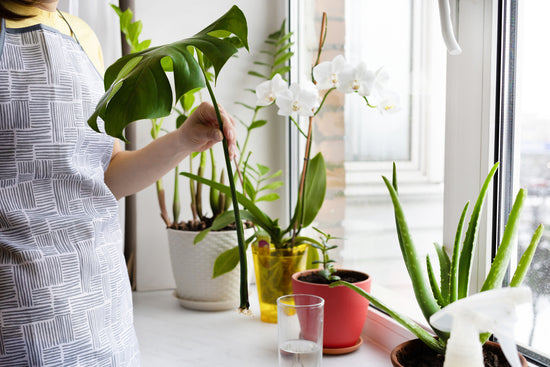Multifunctional plants that fulfill all kinds of needs are effortlessly everyone's favorites. The Kewda tree is one such favorite. Why? Because every part of the plant - from the plant's extracts to its flowers - has unique uses and is often revered for the many benefits it brings.
• Kevda Plant: Where Do Its Roots Trace Back?

The Kevda plant, scientifically known as Pandanus fascicularis, traces its roots back to the diverse landscapes of Southeast Asia. It is native to countries such as India, Indonesia, Malaysia, Thailand, and the Philippines.
This evergreen plant is well adapted to tropical and subtropical climates, and it thrives in regions with warm temperatures, high humidity, and higher levels of rainfall.
The Kewda tree has many names and is called various different things in different parts of the world. Commonly known as Screw Pine due to the spiral arrangement of its leaves, this plant has become an important part of the flora in coastal areas and tropical rainforests.
Buy the Pandanus Plant
• Kevda Flowers: Male and Female

In India, the Kewda tree is also called Ketaki or White Lotus. These flowering plants produce flowers that have various uses based on their types.
There are male and female Kevda flowers, and both grow on different Kevda plants. In Sanskrit, the male Kevda flower is called Ketaki Viphala and the female ones are called Swarna Ketaki.
The male Kevada flowers have a very memorable aroma which floats around and is reminiscent of a rose-like, fruity scent. Due to their captivating aroma, these Kevda flowers are used for fragrances and as other scents.
The female Kevda flowers, on the other hand, have no scent and are thus left to become fruits, which can then be consumed for their own benefits.
The Kevda flower has also effortlessly merged into religious traditions in India and in other countries that it inhabits. In India, Its fragrant flowers play a significant role in religious ceremonies, particularly in Hindu rituals, where they are offered to deities and used to adorn temples.
• Kewda Benefits: Exploring Beyond the Surface

1. Kevda Flowers
a. Perfumery:
The most well-known and celebrated aspect of the Kewda tree is its fragrant flowers. The essential oil extracted from these flowers is a beloved ingredient in the perfume industry. The sweet and exotic aroma is often used to add unique character to perfumes, attars, and essential oil blends.
b. Culinary Uses:
In some cultures, the Kevda flower is used as a flavoring agent in culinary preparations. The flowers house a subtle, sweet fragrance that they often add to dishes, making them a popular choice for desserts, beverages, and traditional sweets.
c. Religious and Cultural Significance:
Kevda flowers hold immense importance in religious ceremonies. They are used as offerings in Hindu rituals, symbolizing purity and auspiciousness. The flowers are also used to decorate temples and idols during festivals and special occasions.
2. Kevda Plant Leaves
a. Weaving and Crafts:
The long, strap-like leaves of the Kevda plant are valuable for weaving. Artisans use them to create mats, baskets, hats, and various crafts. The leaves' durability and flexibility make them ideal for traditional craftsmanship.
b. Culinary Uses:
In some regions, Kevda leaves are used for wrapping and cooking certain dishes. The leaves add a unique flavor to the food and help retain moisture during the cooking process.
3. Fruits

a. Edible Seeds:
While the fruits of the Kevda plant are not as widely used as the flowers and leaves, some varieties produce edible seeds. These seeds can be consumed after proper processing and are sometimes used in traditional recipes.
4. Medicinal Uses
a. Essential Oil Benefits:
Many claim and believe that the essential oil extracted from Kevda flowers has therapeutic properties. But this has also often proven to have basis in truth and it is used in traditional medicine for its anti-inflammatory and calming effects. The oil is sometimes applied topically or used in aromatherapy.
b. Digestive Health:
In certain traditional systems of medicine, extracts from different parts of the Kevda plant are used to promote digestive health and treat issues like indigestion.
5. Kevda Plant Cultural and Ritualistic Significance
a. Religious Offerings:
Beyond their aromatic and culinary uses, Kevda flowers are an integral part of religious ceremonies. They are offered to deities in Hindu rituals as they symbolize the purity, devotion, and auspiciousness of the occasion.
b. Uses in Cultural Festivals:
The presence of Kevda flowers is especially pronounced during cultural and religious festivals, where they are used in decorations, garlands, and rituals, adding a touch of spirituality and cultural richness.
Coexisting with plants like the Kevda plant allows us to live in harmony with another species that not only adds enhances the aesthetic value of our surroundings but also provides us with unparalleled benefits like these.
The Kevda plants do their part by offering this wide range of benefits to us, but how can we take care of them? Here are a few tips to properly care for the Kewda tree -
• Kewda Plant Care and Growing Conditions
1. Climate:
Kevda plants thrive in tropical and subtropical climates. They prefer temperatures between 68°F to 86°F (20°C to 30°C).
Kevda plants are sensitive to cold temperatures and should be protected from extreme cold, which is why planting them in areas with a mild climate is ideal.

2. Soil:
Kevda plants prefer and do well in well-draining soil. A mix of loamy and sandy soil is ideal to prevent waterlogging, as waterlogging can lead to root rot.
Buy Potting Mix
3. Watering:
Adequate and regular watering is crucial, especially during the growing season. The soil should be kept consistently moist but not waterlogged.
During the winter months or in cooler weather, reduce the frequency of watering – as with most other plants - to prevent waterlogged soil.
4. Sunlight:
Kevda plants prefer partial shade to full sunlight. They can tolerate direct sunlight, but a balance between shade and sunlight is ideal for healthy growth and abundant flowering.
5. Pruning:
Regular pruning helps maintain the shape of the plant and encourages the production of more flowers. Remember to remove dead or damaged leaves to promote overall plant health.
Buy Pruning Tools for Plants
6. Fertilization:
Use a balanced, slow-release fertilizer during the growing season to provide essential nutrients. Avoid excessive nitrogen, as it can promote foliage growth at the expense of flowers.
7. Humidity:

Kevda plants thrive in high humidity conditions. If you are growing them in a drier climate, consider misting the plant or placing a tray of water nearby to increase humidity.
8. Propagation:
Kevda plants can be propagated from offsets (shoots that develop at the base of the plant) or seeds. Offsets can be separated and replanted, while seeds should ideally be sown in well-draining soil.
9. Container Gardening:
If growing Kevda plants in containers, use pots with good drainage. Choose a well-draining potting mix and ensure the container has drainage holes.
10. Pest and Disease Management:
Keep an eye out for common pests like aphids and scale insects. If you do notice any issues with the plant, you can treat infestations with insecticidal soap or neem oil. Avoid overwatering to prevent root rot, which is a common issue with Kevda plants.
Buy Neem Oil
The Pandanus fascicularis, or Kewda Tree, is a rather hardy plant and can adapt to various environments. But remember to follow these care tips in order to help it thrive, allowing you to reap the countless benefits this plant has to offer. Happy Gardening!










